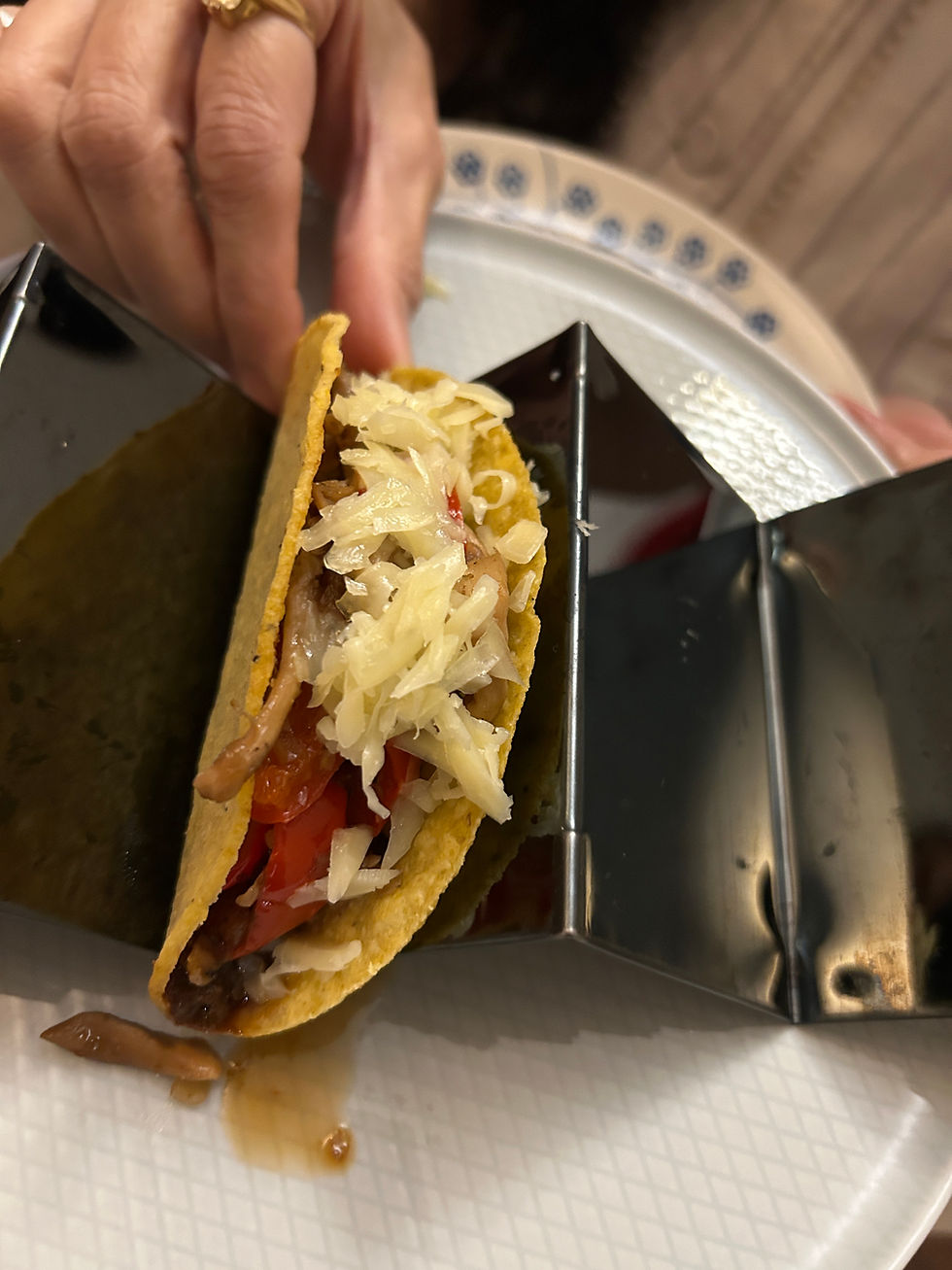Malay curry laksa from Sambal Shiok
- kzafarullah

- May 7, 2023
- 3 min read
Updated: Apr 7
Laksa is a beast of a dish. Consistently voted as one of the world's "must-try" dishes, this meal is spread across Southeast Asia in various forms and under many names. There are three classes of laksa: the curry laksa from Malaysia, Singapore, and Indonesia with coconut milk; the Assam laksa that has tamarind but no coconut milk also from Penang, Malaysia; and the Siamese laksa from Thailand with rec curry.
The origins of laksa are murky, but history tells us that the seafaring spice route between Southeast Asia, India, and Africa has an influence. Some theories suggest that the original laksa was developed by the Chinese traders called the Peranakans, who settled in Indonesia. They wanted to adapt their traditional soup with local spices and coconut milk, giving birth to Alaska. Other theories suggest that laksa popped up simultaneously in multiple locations by Chinese settlers who married locally and adapted their dishes with local ingredients. Laksa became so popular that it spread rapidly; today, it is a mainstay in most of the region.
I first had the opportunity to taste laksa in Singapore in the early 2000s when I was there for work. It was love at first bite, and this is one of the dishes that started my passion in the kitchen.
This laksa is a flavour bomb. It is complex, spicy and decadent. The spices are balanced, and the shrimp adds the deep scent of the sea to the dish. The accompaniments are quite a bit, but guests can customize their individual bowls with what they like. This is part of the experience.
Mandy Yin is a London-based lawyer who started her foray into the food world with the Sambal Shiok restaurant. Sambal Shiok translates to "shockingly good sambal", and this book follows these steps with excellent recipes. The recipes swing from traditional to contemporary while maintaining wonderful flavours. This is a lovely cookbook for those who want to venture into the complex world of Malay cooking.
For more recipes from this cookbook, click here.


Ingredients:
For the laksa paste:
2 large onions, roughly chopped
2 tablespoons ginger paste
8 garlic cloves
4 fresh red chillies, seeded for a milder paste
7-10 dried red chillies, soaked in water for 15 minutes.
3 tablespoons ground coriander seeds
1 1/2 tablespoons ground cumin seeds
1/2 teaspoon turmeric
2 tablespoons chilli powder, or to taste
1 teaspoon shrimp paste (optional)
1/4 cup water
For the laksa broth:
4 tablespoons oil
8 cups chicken broth, fish broth or water
2 cups coconut milk
2 tablespoons palm jaggery or dark brown sugar
Salt, to taste
3 tablespoons tamarind paste
A handful of mint and cilantro mixed
2 2-inch pieces of lemongrass, lightly bruised with a pestle
Accompaniments:
Soft-boiled or hard-boiled eggs, halved
1/2 cup blanched green beans, cut into 1-inch pieces
Beansprouts
Egg noodles
Fried garlic
Hot sauces of your choice, including La-yu, Sriracha and Crispy chilli bean sauce
Lime wedges
ii
Add all the ingredients for the laksa paste to a blender and blitz till you have a smooth purèe. The paste should be very smooth. Set aside. I usually make 2X the amount of the paste and freeze a batch for use later.
To make the laksa broth, Heat the oil in a large pot and add the paste. Cook until the oil separates and the paste is a deep colour, about 20 minutes. Cook the paste on a medium-low flame; it takes time but does not burn.
Add the stock/water, coconut milk, jaggery, salt, tamarind, herbs and lemongrass and simmer for 30 minutes until the tamarind is no longer raw. The spice paste and coconut flavours have been integrated. Taste the broth; it should be creamy and bright from the tamarind and spices. At this point, the soup should only be simmered, not boiled, if boiled, it may split. The broth can be made up to 1 day in advance; it is suggested that you do this so that the soup has time to develop deeper flavours.
Cook the egg noodles per the instructions on the package minus 1 minute for "al dante".
When ready to serve, heat the soup to a simmer and add the shrimp. Cook for 2-4 minutes, depending on the size of the shrimp. Serve immediately with ll the accompaniments.














